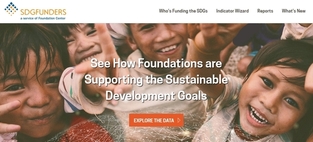Marginalization of Indigenous Peoples Why it Matters to Funders
Long histories of colonization and discrimination have resulted in marginalization of indigenous peoples from dominant societies. “National statistics on health, poverty, and access to education show that many indigenous peoples are still the poorest of the poor, the least healthy, and ones who do not have access to formal education," said Vicky Tauli-Corpuz, UN special rapporteur on the rights of indigenous peoples.
In 2009, a UN Development Group report stated, “In many parts of the world, indigenous peoples suffer from a history of discrimination and exclusion that has left them on the margins of the larger societies in which they exist.” The UN Permanent Forum on Indigenous Issues (UNPFII) further details:
“While they constitute 5 percent of the world's population, they are 15 percent of the world's poor. Most indicators of well-being show that indigenous peoples suffer disproportionately compared to nonindigenous peoples. Indigenous peoples face systemic discrimination and exclusion from political and economic power; they continue to be over-represented among the poorest, the illiterate, the destitute; they are displaced by wars and environmental disasters; indigenous peoples are dispossessed of their ancestral lands and deprived of their resources for survival, both physical and cultural; they are even robbed of their very right to life.”
While their exclusion from the power structures of most societies means they are cut off from basic social services and mainstream income generation, it would be a mistake to view indigenous peoples as helpless victims. “From the industrialized view, indigenous peoples are seen as poor and weak,” said Abdon Nababan, secretary general of the Indigenous Peoples Alliance of the Archipelago (AMAN) in Indonesia.
In Indonesia, explained Abdon, an average of 100 families collectively manages about eight thousand hectares of natural resources in each indigenous community. “When you look at the natural wealth in indigenous territories, they are wealthy peoples who need to be empowered to manage their wealth.” Land concerns—both land rights and selfdetermination— are core issues in indigenous communities, as is the preservation of culture and language.
Takeaways are critical, bite-sized resources either excerpted from our guides or written by Candid Learning for Funders using the guide's research data or themes post-publication. Attribution is given if the takeaway is a quotation.
This takeaway was derived from Funding Indigenous Peoples.


